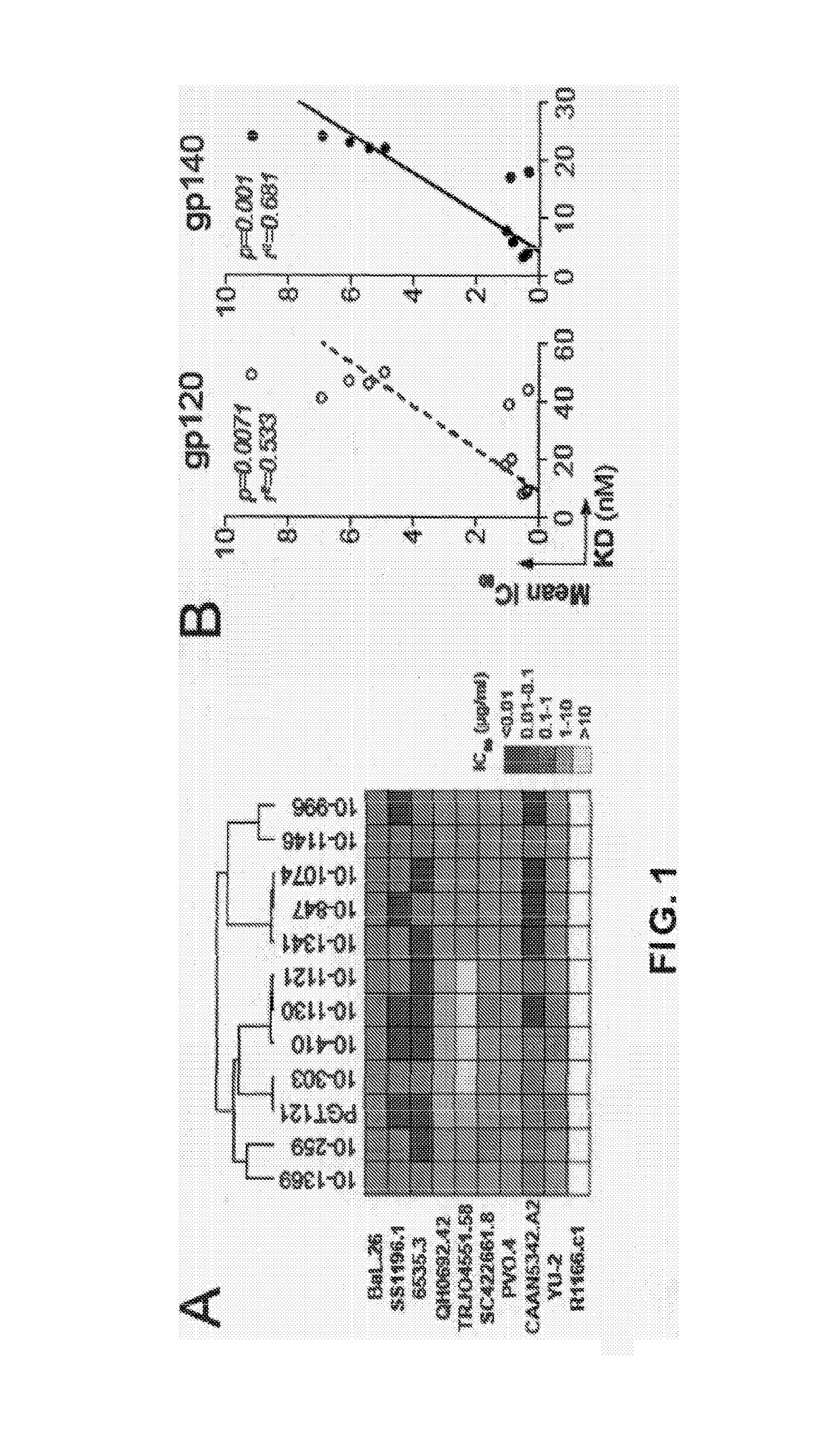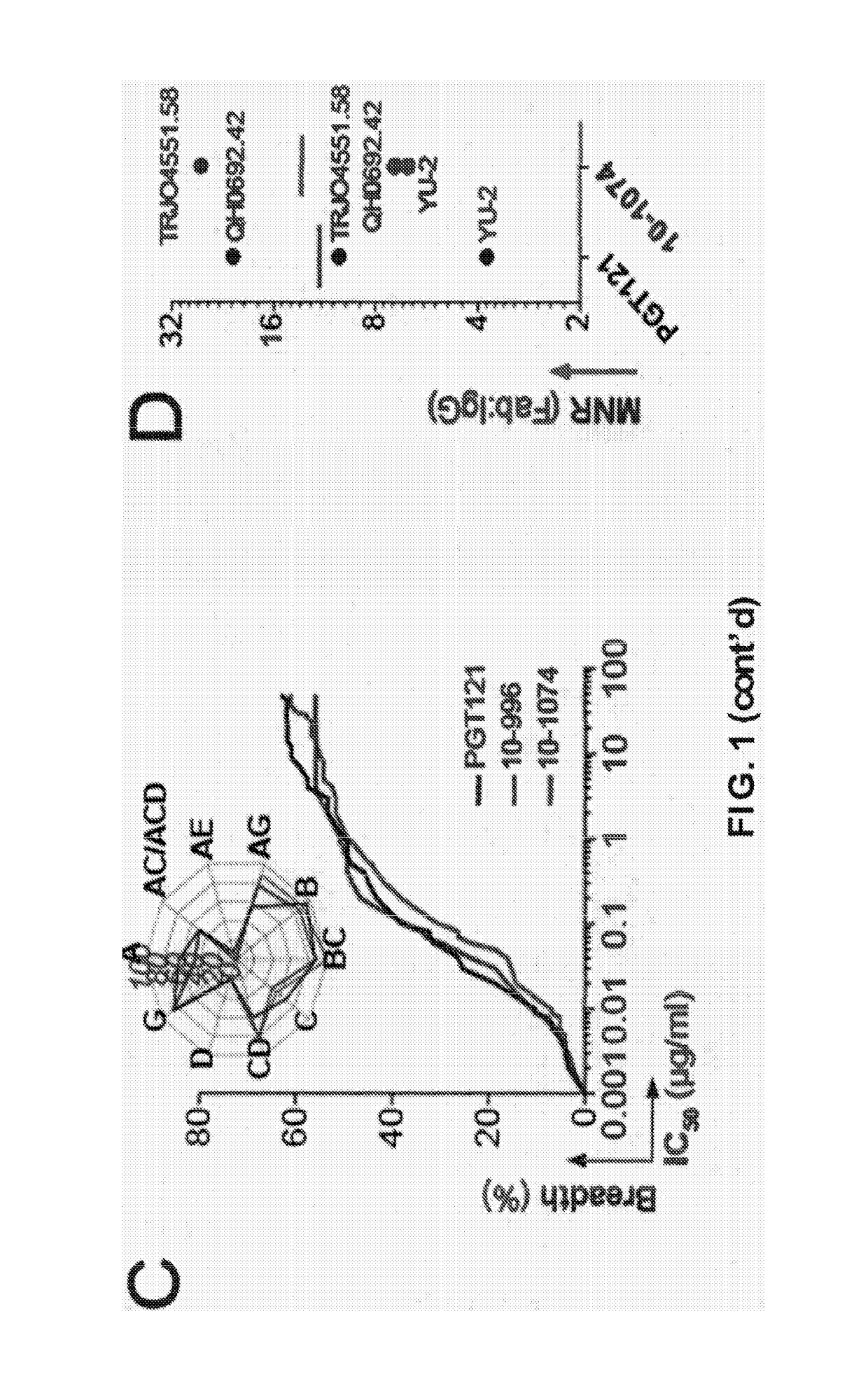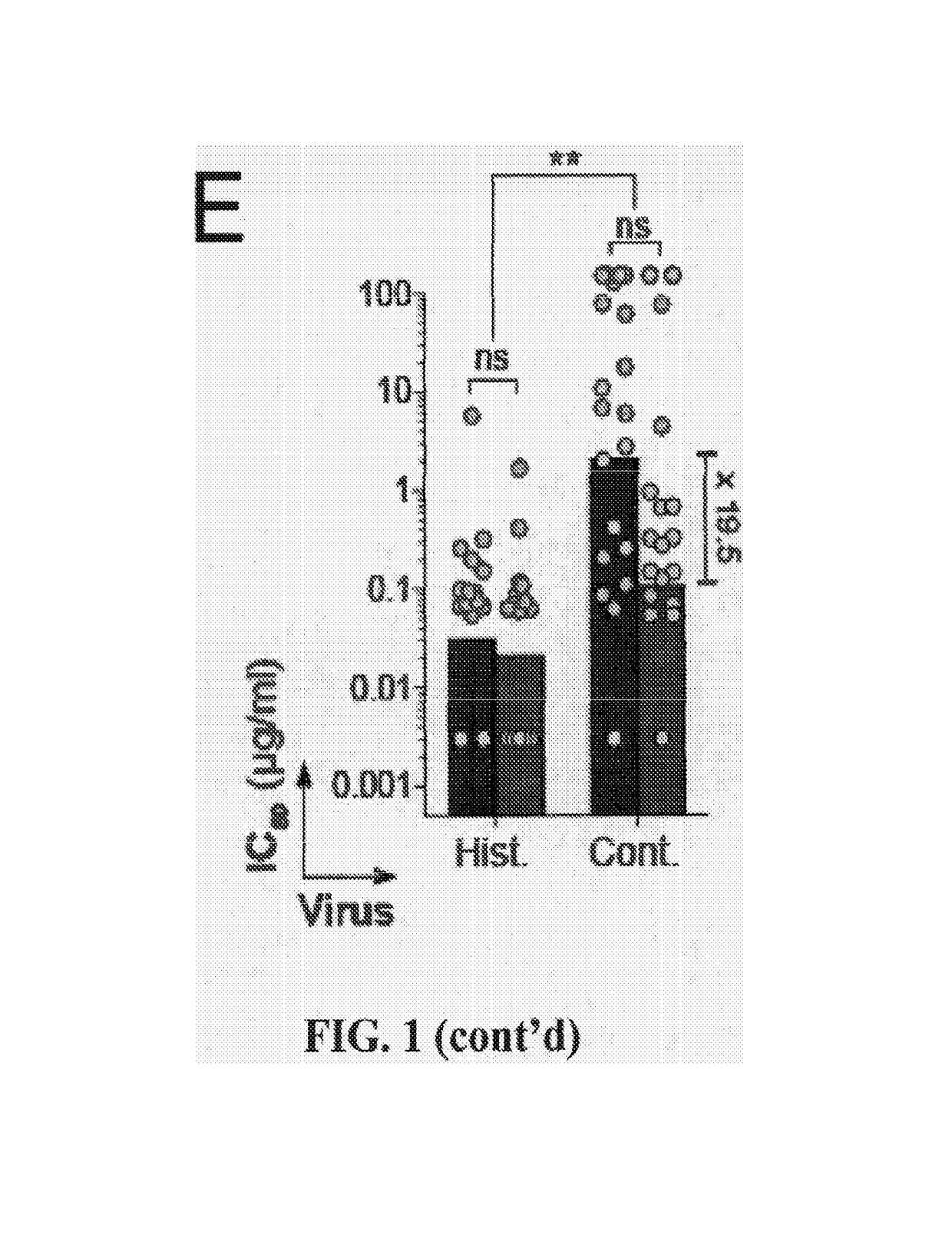Broadly-neutralizing anti-HIV antibodies
a broad-neutralizing, anti-hiv technology, applied in the direction of immunoglobulins, antibodies to medical ingredients, peptides, etc., can solve the problem of little known regarding the specificity and activity of these antibodies
- Summary
- Abstract
- Description
- Claims
- Application Information
AI Technical Summary
Benefits of technology
Problems solved by technology
Method used
Image
Examples
example 1
[0120]This example describes materials and methods used in EXAMPLES 2-5 below.
[0121]HIV antibodies were cloned and produced following gp140-specific single B-cell capture as previously described (Mouquet, H. et al. PLoS One 6, e24078 (2011); Tiller, T. et al. J Immunol Methods 329, 112-24 (2008); and Scheid, J. F. et al. Nature 458, 636-40 (2009)). PGT121GM and 10-1074GM “glycomutant” antibodies were generated by substituting 10-1074 residues at HC positions 32, 53, 54, 58, 97, 1001 into PGT121 and vice versa. Binding properties of anti-gp140 antibodies to HIV Env proteins were assayed by ELISA, SPR and glycan microarray assays as previously described (Scheid, J. F. et al. Science 333, 1633-7 (2011); Walker, L. M. et al. Nature 477, 466-70 (2011); and Mouquet, H. et al. PLoS One 6, e24078 (2011)). Neutralization was evaluated using (i) a luciferase-based assay in TZM.bl cells, and (ii) a PBMC-based assay using infection with primary HIV-1 variants as previously described (Li, M. et ...
example 2
Predominance and Diversity of PGT121 Clonotype
[0151]gp140-specific IgG memory B cells were isolated from a clade A-infected African donor using YU-2 gp140 trimers as “bait.” Eighty-seven matching immunoglobulin heavy (IgH) and light (IgL) chain genes corresponding to 23 unique clonal families were identified. The IgH anti-gp140 repertoire was dominated by one clonal family representing ˜28% of all expanded B cell clones. This B cell family corresponds to the same clone as PGT121-123 (Nature 477(7365):466-470) and contained 38 members, 29 of which were unique variants at the nucleotide level (Table 3). Based on their IgH nucleotide sequence, the PGT121 family divides into two groups: a PGT121-like group containing PGT121-123 and 9 closely-related variants, and a second group, 10-1074-like, containing 20 members. Although our traditional primers (J Immunol Methods 329(1-2):112-124; Science 301(5638):1374-1377) did not amplify the IgL genes expressed by the PGT121 B cell clone due to t...
example 3
PGT121 and 10-1074 Epitopes
[0156]Asn332gp120 in the vicinity of the V3 loop stem was reported as critical for binding and viral neutralization by PGT121 (Nature 477(7365):466-470), thus we examined the role of V3 in antigen recognition by PGT121-like and 10-1074-like antibodies. ELISAs were performed using HXB2 gp120 “core” proteins that lack V1-V3 loops (gp120core) or retain a portion of V3 (2CC-core), and using a YU-2 gp120 mutant protein carrying a double alanine substitution in the V3 stem (gp120GD324-5AA). The tested antibodies showed decreased reactivity against variants lacking the V3 loop and gp120GD324-5AA when compared to intact YU-2 gp120, with the binding of 10-1074-group antibodies being the most affected (FIGS. 5A and B). These results suggest that recognition by both antibody groups involves protein determinants in the vicinity of the V3 loop. None of the antibodies bound to overlapping peptides spanning V3, suggesting the targeted epitopes are discontinuous and / or re...
PUM
| Property | Measurement | Unit |
|---|---|---|
| pH | aaaaa | aaaaa |
| temperature | aaaaa | aaaaa |
| temperature | aaaaa | aaaaa |
Abstract
Description
Claims
Application Information
 Login to View More
Login to View More - R&D
- Intellectual Property
- Life Sciences
- Materials
- Tech Scout
- Unparalleled Data Quality
- Higher Quality Content
- 60% Fewer Hallucinations
Browse by: Latest US Patents, China's latest patents, Technical Efficacy Thesaurus, Application Domain, Technology Topic, Popular Technical Reports.
© 2025 PatSnap. All rights reserved.Legal|Privacy policy|Modern Slavery Act Transparency Statement|Sitemap|About US| Contact US: help@patsnap.com



